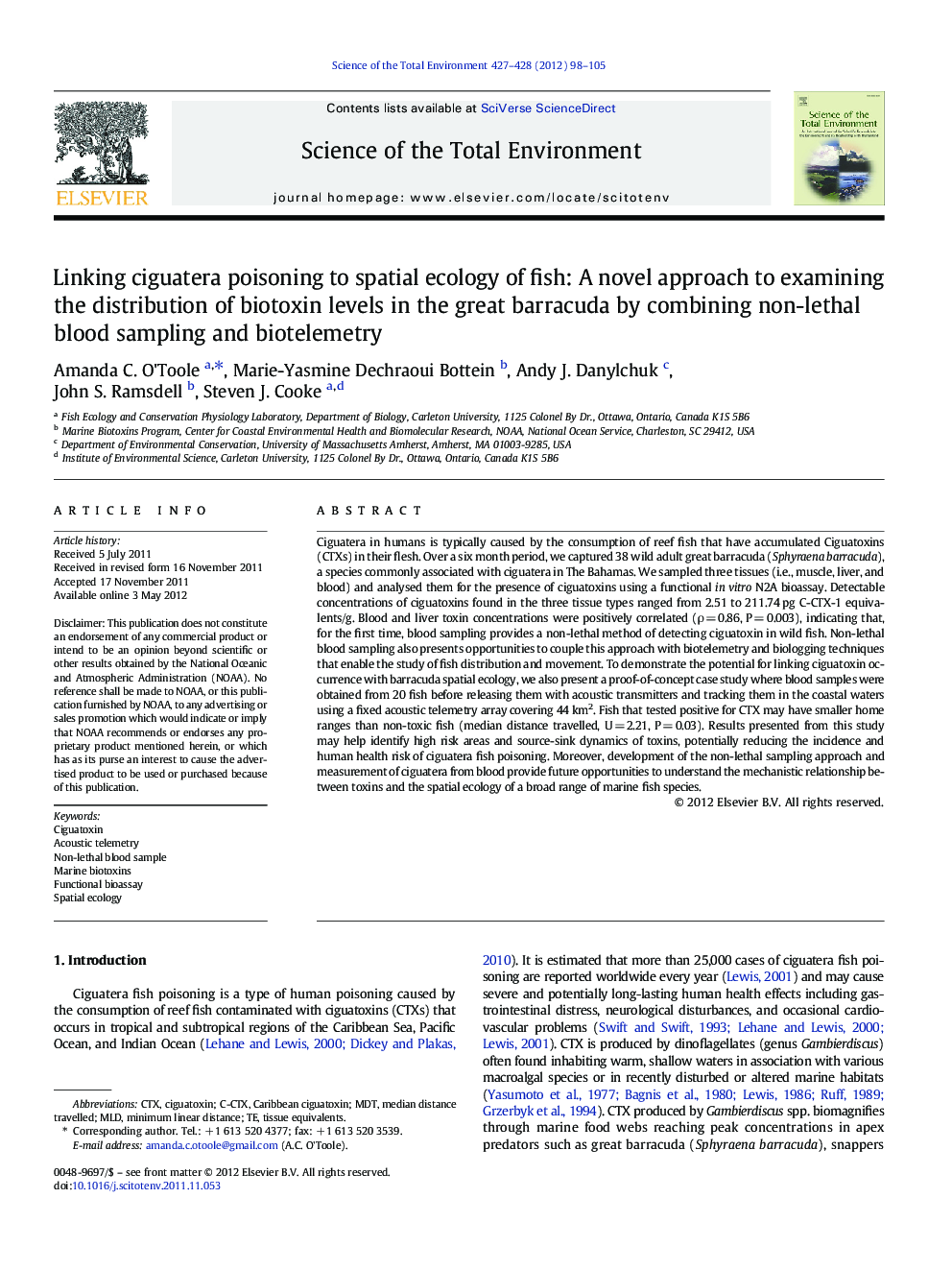| Article ID | Journal | Published Year | Pages | File Type |
|---|---|---|---|---|
| 4429413 | Science of The Total Environment | 2012 | 8 Pages |
Ciguatera in humans is typically caused by the consumption of reef fish that have accumulated Ciguatoxins (CTXs) in their flesh. Over a six month period, we captured 38 wild adult great barracuda (Sphyraena barracuda), a species commonly associated with ciguatera in The Bahamas. We sampled three tissues (i.e., muscle, liver, and blood) and analysed them for the presence of ciguatoxins using a functional in vitro N2A bioassay. Detectable concentrations of ciguatoxins found in the three tissue types ranged from 2.51 to 211.74 pg C-CTX-1 equivalents/g. Blood and liver toxin concentrations were positively correlated (ρ = 0.86, P = 0.003), indicating that, for the first time, blood sampling provides a non-lethal method of detecting ciguatoxin in wild fish. Non-lethal blood sampling also presents opportunities to couple this approach with biotelemetry and biologging techniques that enable the study of fish distribution and movement. To demonstrate the potential for linking ciguatoxin occurrence with barracuda spatial ecology, we also present a proof-of-concept case study where blood samples were obtained from 20 fish before releasing them with acoustic transmitters and tracking them in the coastal waters using a fixed acoustic telemetry array covering 44 km2. Fish that tested positive for CTX may have smaller home ranges than non-toxic fish (median distance travelled, U = 2.21, P = 0.03). Results presented from this study may help identify high risk areas and source-sink dynamics of toxins, potentially reducing the incidence and human health risk of ciguatera fish poisoning. Moreover, development of the non-lethal sampling approach and measurement of ciguatera from blood provide future opportunities to understand the mechanistic relationship between toxins and the spatial ecology of a broad range of marine fish species.
► Wild adult great barracuda tissues were sampled (i.e., muscle, liver, and blood) and analysed for presence of ciguatoxins. ► A subset of the blood sampled great barracuda was released with acoustic transmitters. ► Barracuda that tested positive for ciguatoxin may have smaller home ranges than non-toxic fish. ► Non-lethal blood sampling allows for simultaneous monitoring of spatial ecology and detection of CTX presence in wild fish. ► Techniques used in this study may help identify high risk areas and reduce risk of ciguatera fish poisoning in humans.
